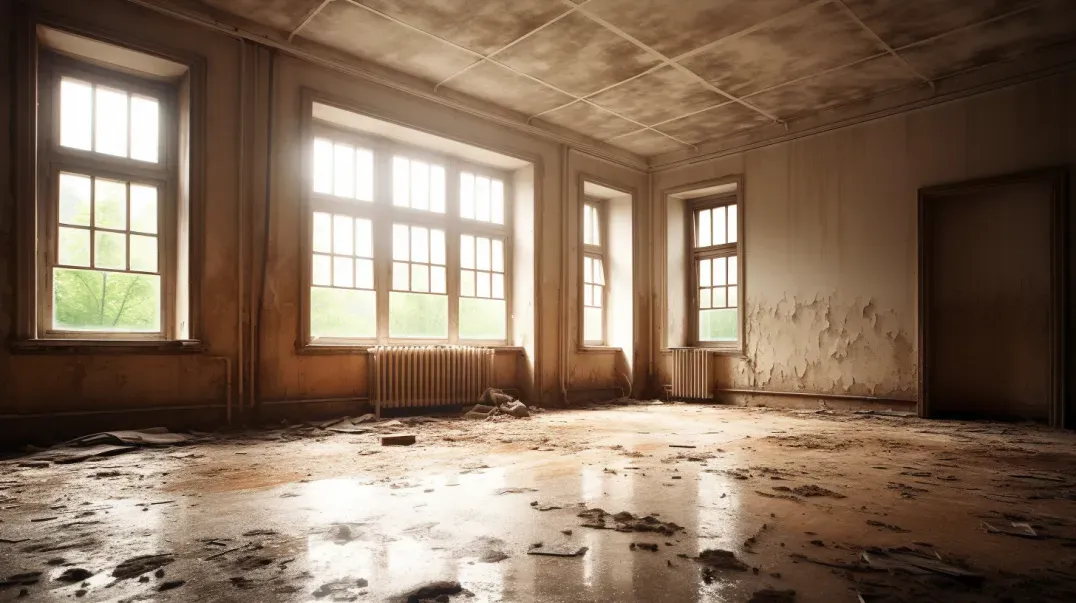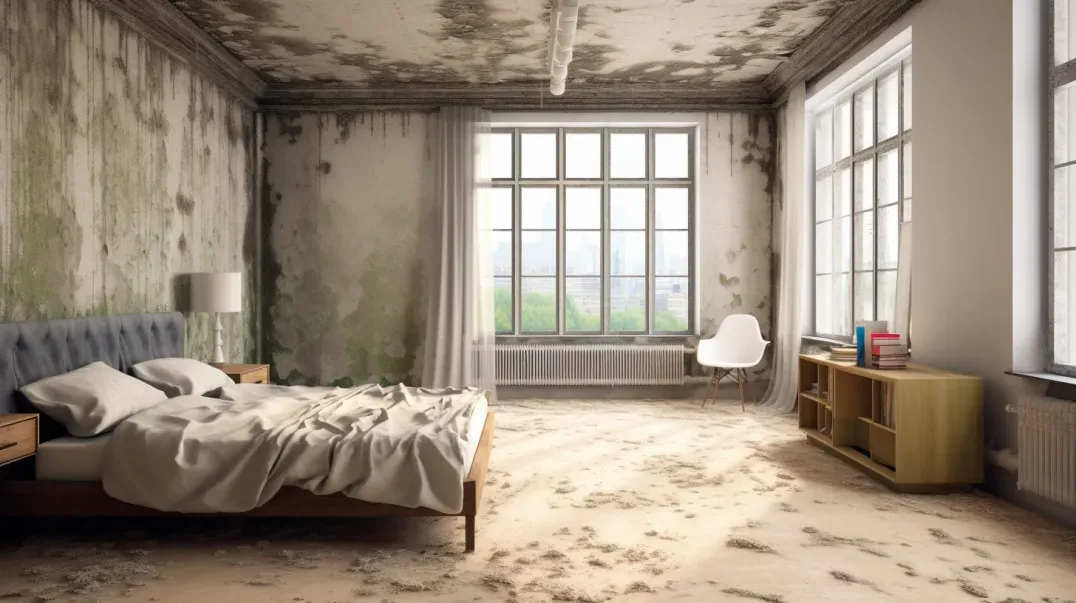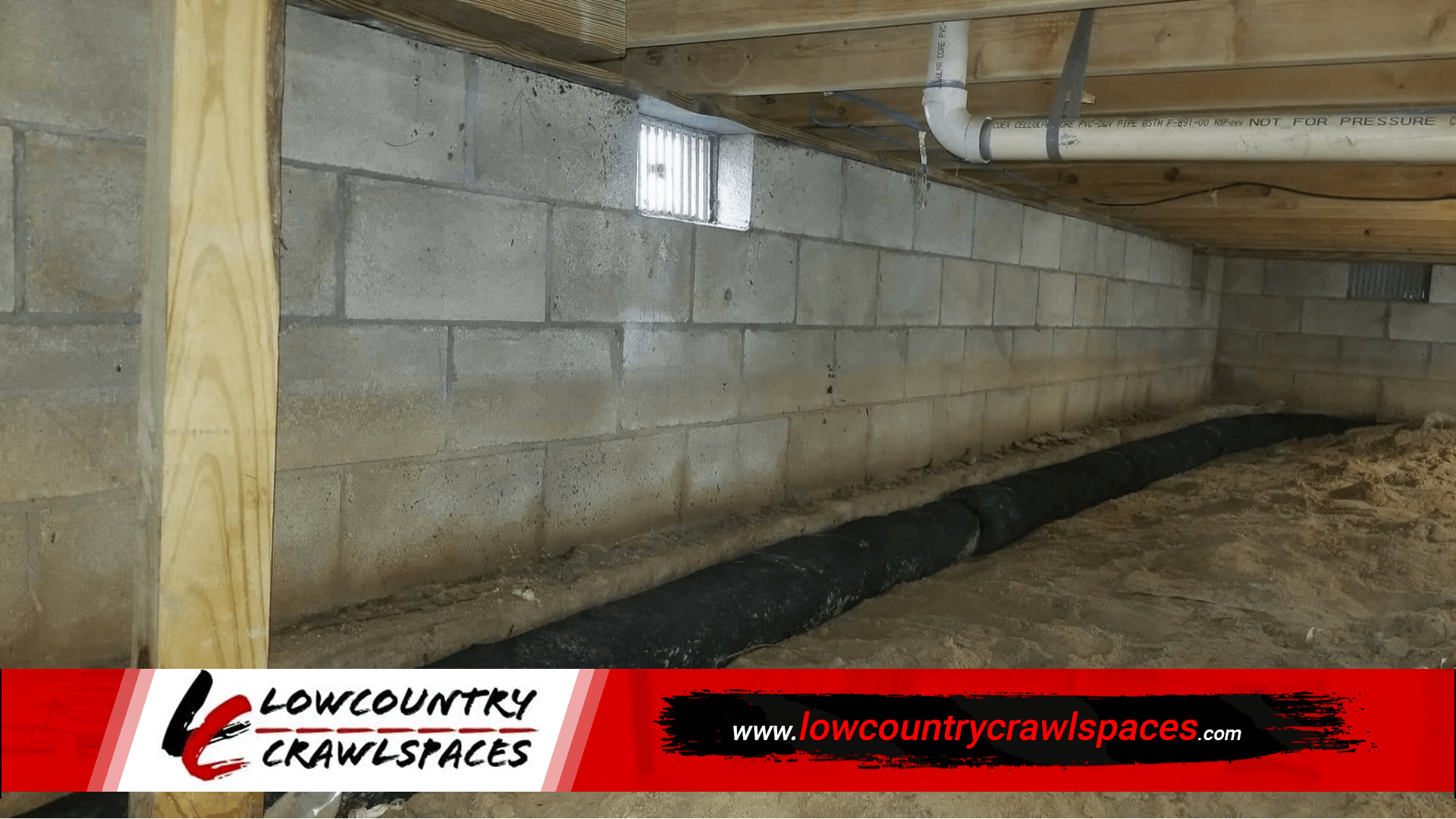Protect Your Home from Water Damage with Crawl Space French Drain Installation in Ravenel, SC
Living in Ravenel, SC, homeowners are all too familiar with the threat of water damage. Whether it's from heavy rains, coastal flooding, or simply high humidity, water can cause serious problems for your home's foundation, structural integrity, and indoor air quality. One effective solution to protect your home from water damage is by installing a French drain in your crawl space. French drains are a type of drainage system that redirect water away from your home's foundation, preventing it from seeping in and causing damage. In this blog post, we'll explain how French drains work, the benefits of installing one in your crawl space, and what to expect during the installation process.
Overview of Crawl Space French Drain Installation
A French drain is a type of drainage system that is used to redirect water away from a specific area. In the context of crawl space protection, a French drain is installed in the crawl space under your home. The drain typically consists of a perforated pipe that is surrounded by gravel or other drainage material. The pipe is installed at the base of your crawl space walls, and the gravel is used to create a slope so that water will flow toward the pipe. Once the water reaches the pipe, it is carried away from your home's foundation, preventing it from seeping in and causing damage.
The installation process for a crawl space French drain typically involves the following steps:
- Excavation of the crawl space to access the foundation walls.
- Installation of the perforated pipe along the base of the foundation walls.
- Backfilling the crawl space with gravel to create a slope towards the pipe.
- Connecting the pipe to a discharge point, such as a sump pump or a drainage field, to carry the water away from the home.
- Reinstalling the crawl space vapor barrier or encapsulation to cover the drain and protect the area from further water damage.
It's generally recommended to have a professional install a French drain, as they have the knowledge of the local laws and regulations and the right tools and equipment to ensure that the drain is installed properly. Also, it's good to evaluate the condition of the crawl space before installing a French Drain; if there's already water damage, it's recommended to fix it before installing a French Drain as it can make it less effective.
Benefits of Installing a French Drain in Ravenel, SC
Installing a French drain in your crawl space can provide a number of benefits for homeowners in Ravenel, SC, especially those living in areas prone to heavy rains and coastal flooding. Some of the main benefits include:
Protection from water damage
The primary benefit of a French drain is that it redirects water away from your home's foundation, preventing it from seeping in and causing damage. This can help to protect your home's structural integrity and prevent costly repairs.
Improved indoor air quality
When water seeps into your crawl space, it can lead to the growth of mold and mildew, which can then circulate throughout your home, causing health problems and unpleasant odors. A French drain can help to keep your crawl space dry, reducing the risk of mold growth and improving indoor air quality.
Increased energy efficiency
A damp crawl space can also lead to increased energy costs, as the humidity in the space can cause your HVAC system to work harder. By preventing water from entering the crawl space, a French drain can help to keep the space dry and improve energy efficiency.
Long-term durability
A French drain can last for many years when installed properly and maintained. A French drain is a cost-effective solution that can provide long-term protection for your home against water damage.
Help with landscaping
if you have a sloped yard towards the house, installing a French drain can help redirect water away from the foundation and prevent pooling around the house. Also, if your property is prone to coastal flooding and you have a sump pump, this can help to pump the water away from the property.
It's important to note that installing a French drain is not a guarantee of total protection from water damage, and it's recommended to have proper landscaping, gutters, and regular maintenance to prevent water damage.
Types of French Drains Available
When it comes to installing a French drain, there are a few different options available, each with its own unique features and benefits. The most common types of French drains include:
Interior French Drain
This type of French drain is installed within the interior of the home. This type of drain is typically used in the basement and crawlspace to redirect water seepage into a sump pump or drainage field to prevent water damage.
Exterior French Drain
This type of French drain is installed outside of the home, typically around the perimeter of the foundation. This type of drain is used to redirect surface water and groundwater away from the foundation to prevent water from seeping in.
Surface French Drain
This type of French drain is installed above ground and used to redirect surface water and runoff away from a specific area. This type of drain can be used to prevent water from pooling around a home's foundation or to protect a low-lying area of a yard from flooding.
Combination French Drain
'This type of French drain is a combination of Interior, Exterior, and Surface French Drains. This is typically used in severe water damage cases.
Each type of French drain has its own benefits and may be more suitable for certain situations depending on the home's specific needs. Before installing a French drain, it's important to consult with a professional to determine the best type of drain for your situation.
Steps for Installing a French Drain
Installing a French drain involves several steps, including excavation, pipe installation, backfilling, and connection to a discharge point. Here is a general overview of the process:
Excavation
The first step in installing a French drain is to excavate the area where the drain will be installed. This typically involves removing soil and other materials to access the foundation walls and creating a trench for the pipe.
Pipe installation
Once the excavation is complete, the perforated pipe is laid along the foundation wall. This pipe is typically made from PVC and has small holes along its length to allow water to enter and be carried away.
Backfilling
The trench is then backfilled with gravel or other drainage material. This helps to create a slope towards the pipe so that water will flow towards it.
Connection to a discharge point
The pipe is then connected to a discharge point, such as a sump pump or a drainage field. This is used to carry the water away from the home.
Reinstalling the vapor barrier
Finally, the crawl space vapor barrier or encapsulation is reinstalled to cover the drain and protect the area from further water damage.
It's important to note that the installation of a French drain can vary depending on the specific situation and local laws and regulations. It is highly recommended to consult with a professional or a certified contractor to ensure that the job is done correctly.
Potential Issues with French Drain Installation
While French drains can be an effective solution to protect your home from water damage, there are a few potential issues that you should be aware of:
Clogging
Over time, French drains can become clogged with debris, such as leaves, dirt, and sediment. This can impede the flow of water and reduce the effectiveness of the drain. Regular maintenance, such as cleaning the pipes, can help to prevent clogging.
Improper installation
French drains need to be installed correctly to function properly. If the drain is installed at the wrong angle or the wrong type of pipe is used, the drain may not function correctly and could lead to water damage. Hiring a professional contractor is highly recommended to ensure proper installation.
Inadequate discharge point
The French drain must be connected to a discharge point, such as a sump pump or a drainage field, that can effectively carry water away from your home. If the discharge point is not adequate, water may not be effectively redirected and could cause water damage.
Soil condition
In some cases, the soil in the area may not be suitable for French drain installation, such as clay soil that does not allow water to flow through easily. This can make it difficult for the drain to function effectively and we may need to look for alternative solutions.
Misunderstanding of the French Drain's role
A French Drain is a helpful tool to redirect water from certain areas but is not a solution to all water issues. Landscaping, gutters, and proper grading should also be taken into consideration to prevent water damage.
By being aware of these potential issues and taking steps to prevent them, you can help to ensure that your French drain functions effectively and protects your home from water damage.
Cost of Installing a French Drain in Ravenel, SC
The cost of installing a French drain in Ravenel, SC can vary depending on a number of factors, such as the size of your crawl space, the type of drain you choose, and the complexity of the installation.
On average, the cost of a French drain installation can range from $2,000 to $8,000, but it can be more or less depending on the specific project. Some of the factors that can affect the cost include:
Size of the crawl space
The larger the crawl space, the more materials, and labor will be required, which can increase the overall cost of the project.
Type of drain
Different types of French drains have varying costs, for example, a surface French Drain typically is cheaper than an Interior or a Combination French Drain.
Discharge point
If the French drain needs to be connected to a sump pump or a drainage field, the cost will be affected by the complexity of the connection and the cost of the pump/drainage field.
Excavation
The excavation process can add to the cost of French drain installation as it requires equipment, labor and materials.
It's important to keep in mind that the cost of French drain installation can be more than the cost of water damage repairs and also, the cost of French drain installation should be viewed as an investment in protecting the value and integrity of your home.
It's recommended to consult with a professional contractor to get a more accurate estimate of the cost of installing a French drain in Ravenel, SC, based on the specific situation.
Facts About Crawl Space French Drain Installation in Ravenel, SC
- Ravenel, SC is located in Charleston County in the Lowcountry region of South Carolina.
A French drain is a trench filled with gravel or rock that redirects surface and groundwater away from an area. - A crawl space French drain installation in Ravenel, SC is a common solution for managing water drainage and preventing flooding.
- The installation of a French drain in a crawl space typically involves digging a trench and filling it with gravel or rock.
- The trench should be sloped to allow water to flow away from the crawl space.
- A sump pump may be installed in the crawl space to help move the water away from the area.
- The sump pump should be connected to a discharge pipe to ensure the water is directed away from the property.
- The French drain should be covered with a filter fabric to prevent soil and debris from entering the drain.
Frequently Asked Questions
What is the purpose of a French drain?
A French drain redirects water away from a specific area to prevent water damage, by installing a perforated pipe surrounded by drainage material along the foundation walls.
How does a French drain work?
A French drain works by redirecting water through a perforated pipe surrounded by drainage material, away from a specific area, preventing water damage. This is achieved by creating a slope towards the pipe to direct water to it and connecting it to a discharge point to carry water away from the foundation.
How long does it take to install a French drain?
The installation time for a French drain can vary, but typically ranges from 2–7 days, depending on the size of the crawl space, soil condition, and complexity of the installation. Consult a professional contractor for accurate estimates.
How do I know if I need a French drain?
Signs of water damage or dampness in the crawl space, water pooling around the house foundation, or a sloped yard towards the house are indications that a French drain might be needed. Consult with a professional contractor to evaluate and make a proper assessment.
Can I install a French drain myself?
Installing a French drain can be a complex process, and it is recommended that you consult with a professional contractor with knowledge of local laws and regulations and the proper tools and equipment to ensure that the drain is installed correctly and efficiently.
How will the crawl space be prepared for installation?
To prepare for the installation of a French drain, the crawl space will need to be excavated and the area cleared of debris and other materials to access the foundation walls and create a trench for the pipe. A professional contractor will be in charge of preparing the area before the installation.
Who can help me with the installation process?
For a French Drain installation, it's recommended to consult with a professional contractor who has the knowledge of local laws and regulations and the proper tools and equipment to ensure the installation is done correctly and efficiently.
Contact Lowcountry Crawlspaces Today!
Lowcountry Crawlspaces will do everything we can to ensure your experience with us is excellent.
Request A FREE Estimate
CHECKOUT RECENT POST



Schedule Your FREE Crawl Space Evaluation Today
There Is No Crawl Space Job We Can’t Fix!




